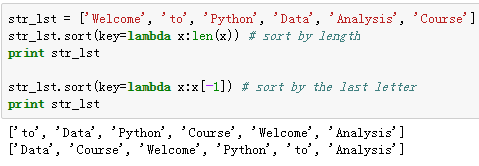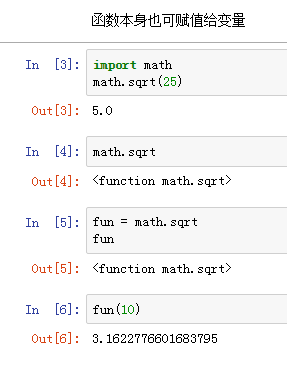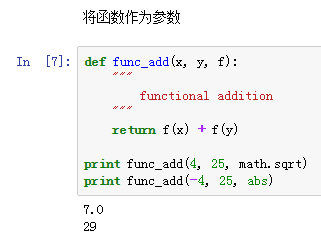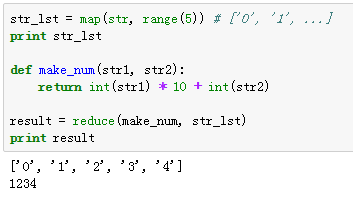python高级特性
1、集合的推导式
- 列表推导式,使用一句表达式构造一个新列表,可包含过滤、转换等操作。
语法:[exp for item in collection if codition]
if codition - 可选



- 字典推导式,使用一句表达式构造一个新列表,可包含过滤、转换等操作。
语法:{key_exp:value_exp for item in collection if codition}

- 集合推导式
语法:{exp for item in collection if codition}

- 嵌套列表推导式

2、多函数模式
函数列表,python中一切皆对象。
|
1
2
3
4
5
6
7
8
9
10
11
12
13
14
15
16
17
18
19
20
21
22
23
24
25
26
27
28
29
30
31
32
33
|
# 处理字符串str_lst = ['$1.123', ' $1123.454', '$899.12312']def remove_space(str): """ remove space """ str_no_space = str.replace(' ', '') return str_no_spacedef remove_dollar(str): """ remove $ """ if '$' in str: return str.replace('$', '') else: return strdef clean_str_lst(str_lst, operations): """ clean string list """ result = [] for item in str_lst: for op in operations: item = op(item) result.append(item) return resultclean_operations = [remove_space, remove_dollar]result = clean_str_lst(str_lst, clean_operations)print result |
执行结果:['1.123', '1123.454', '899.12312']
3、匿名函数lambda
- 没有函数名
- 单条语句组成
- 语句执行的结果就是返回值
- 可用作sort的key函数

python高阶函数
1、函数式编程
- 函数本身可以赋值给变量,赋值后变量为函数;
- 允许将函数本身作为参数传入另一个函数;
- 允许返回一个函数。


2、map/reduce函数
- map(fun, lst),将传入的函数变量func作用到lst变量的每个元素中,并将结果组成新的列表返回


- reduce(func(x,y),lst),其中func必须有两个参数。每次func计算的结果继续和序列的下一个元素做累积计算。
lst = [a1, a2 ,a3, ......, an]
reduce(func(x,y), lst) = func(func(func(a1, a2), a3), ......, an)

3、filter函数
- 筛选序列
- filter(func, lst),将func作用于lst的每个元素,然后根据返回值是True或False判断是保留还是丢弃该元素。
